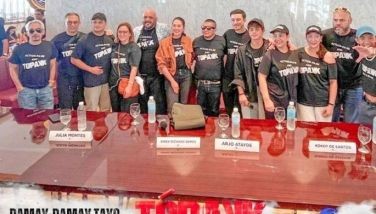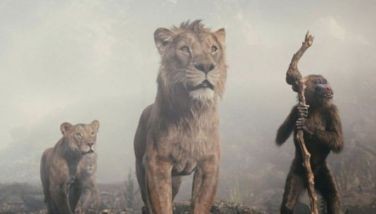When lines are blurred between ‘real’ and ‘animated’ worlds
Not simply colliding in the slapstick tradition of 1988’s pioneering “Who Framed Roger Rabbit?,” but in the more fundamental sense of transforming actors into animated characters and vice versa.
The lines have been rendered so blurry that even close observers of the industry are asking what seems an easy question: What is animation?
The director of “Roger Rabbit” has created a film that challenges whatever your answer may be. Robert Zemeckis’ “Beowulf” marries filmed actor performances, animation and special effects to create a unique, semi-but-not-quite-realistic look that many identify more with video games than movies.
“Beowulf” qualifies under Academy rules — revised several months ago to require “frame by frame” work — to compete for an Animated Feature Oscar against the likes of “Ratatouille” and the black-and-white 2-D Iranian film “
That possibility distresses traditional animators.
“It’s a little bit odd when they’re being put in the category competing in the same way for awards,” said Kevin Koch, a longtime animator of DreamWorks films like “Into the Hedge” and “Shrek 2.”
The intricate detail of “Beowulf” is what sets it apart, but it was created with a motion-capture process inherently similar to those used in recognizably cartoonish movies. Child actors overacted before a green screen to form the basis of last year’s “Monster House,” and dancer Savion Glover supplied the penguins’ smooth moves for winner “Happy Feet.”
There has been push-back. “Ratatouille” director Brad Bird, one of the most visible CG animation purists, is believed to be behind a good-natured jab at competitors following the credits on that film’s DVD. A cartoon businessman is pictured smiling proudly as text proclaims the movie was made with “100 percent genuine animation” and “no motion capture or any other performance shortcuts.” “If you ask the average animator what they think, they’ll tell you they don’t think motion capture is animation,” said Jimmy Hayward, an animator on “Toy Story.”
Yet there have never been bright lines. The technique of rotoscoping — capturing human movement in images and then tracing those into the cartoon world — was invented by Max Fleisher in the 1910s and even incorporated into key early Disney cartoon features like 1937’s “Snow White and the Seven Dwarfs.”
So what’s the problem with that? And who are today’s animators to talk, anyway? They long ago traded in pen and paper for customized computer rendering programs.
“The essence of caricaturing life is an art form, and it’s its own art form,” said Hayward, who is now directing an animated Dr. Seuss feature, “Horton Hears a Who,” due in March. “Motion capture is outside of all the craft that goes into the other parts of it.”
“Most animators feel there’s a charm to see a drawing come to life, or to see these computer puppets come to life,” said David Silverman, who directed the 2-D “The Simpsons Movie.” “When what you’re doing is trying to replicate life 100 percent, you could call it animation, but it’s puzzling.”
It should be said: The creators of “Beowulf” don’t call it animation, nor do they intend to replicate real life. “It’s a new art form that is performance-based,” producer Steve Starkey said, echoing comments Zemeckis made about his 2004 effort, “The Polar Express” (a performance-capture movie that had many traditional animators shuddering for its characters’ lifeless eyes and stilted movements.)
“If one were to call it traditional animation, I think it would be a disservice to the brilliant animators of the like that worked on ‘Roger Rabbit,’ that brought those characters to life. I also think it would be a disservice to the performers like Ray Winstone, whose performance lives on-screen.”
Jerome Chen, visual effects supervisor for “Beowulf,” oversaw some 500 animators and worked on the project for three years. He argues that it should be included in the animation category, adding that animators regularly tweaked the facial expressions or movements of actors depicted in the film.
Just don’t try telling Winstone, who plays the title character, that somebody changed his acting. “To me, I can’t see where performances were changed,” he said. “We all played our parts.”
Winstone, who is credited on IMDB as the “voice” of Beowulf, said, “It wasn’t just voice, believe me. I broke two ribs doing this film.”
Starkey predicts the familiarity of working primarily with actors will continue to draw high-profile filmmakers to performance-capture animation.
James Cameron is using the technique for his “Avatar” movie, coming in 2009. Spielberg and Jackson announced in May that they’d direct and produce three 3-D animated movies based on Belgian comic artist Georges Remi’s adventuresome Tintin character.
“Both Steven and Bob (Zemeckis) love to be able to do things that in their mind’s eye they could see but physically they couldn’t accomplish,” Starkey said.
That’s all well and good with traditional animators. They just wish there were more room for recognition of their work among
“The problem is animation isn’t considered in enough categories,”
- Latest
- Trending























